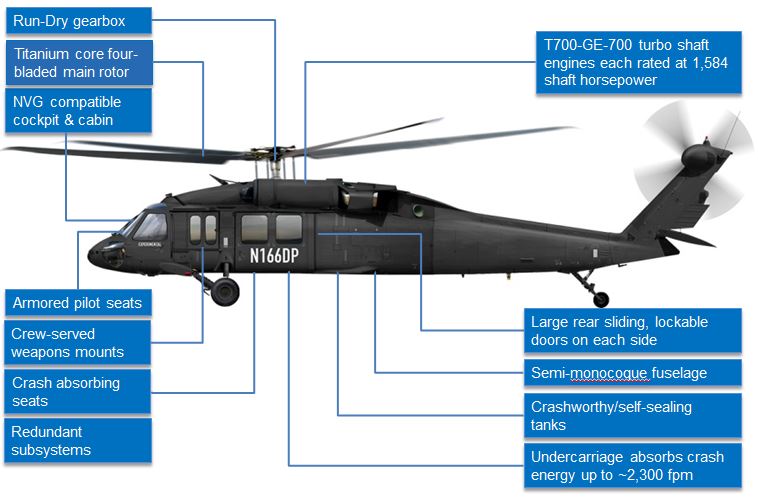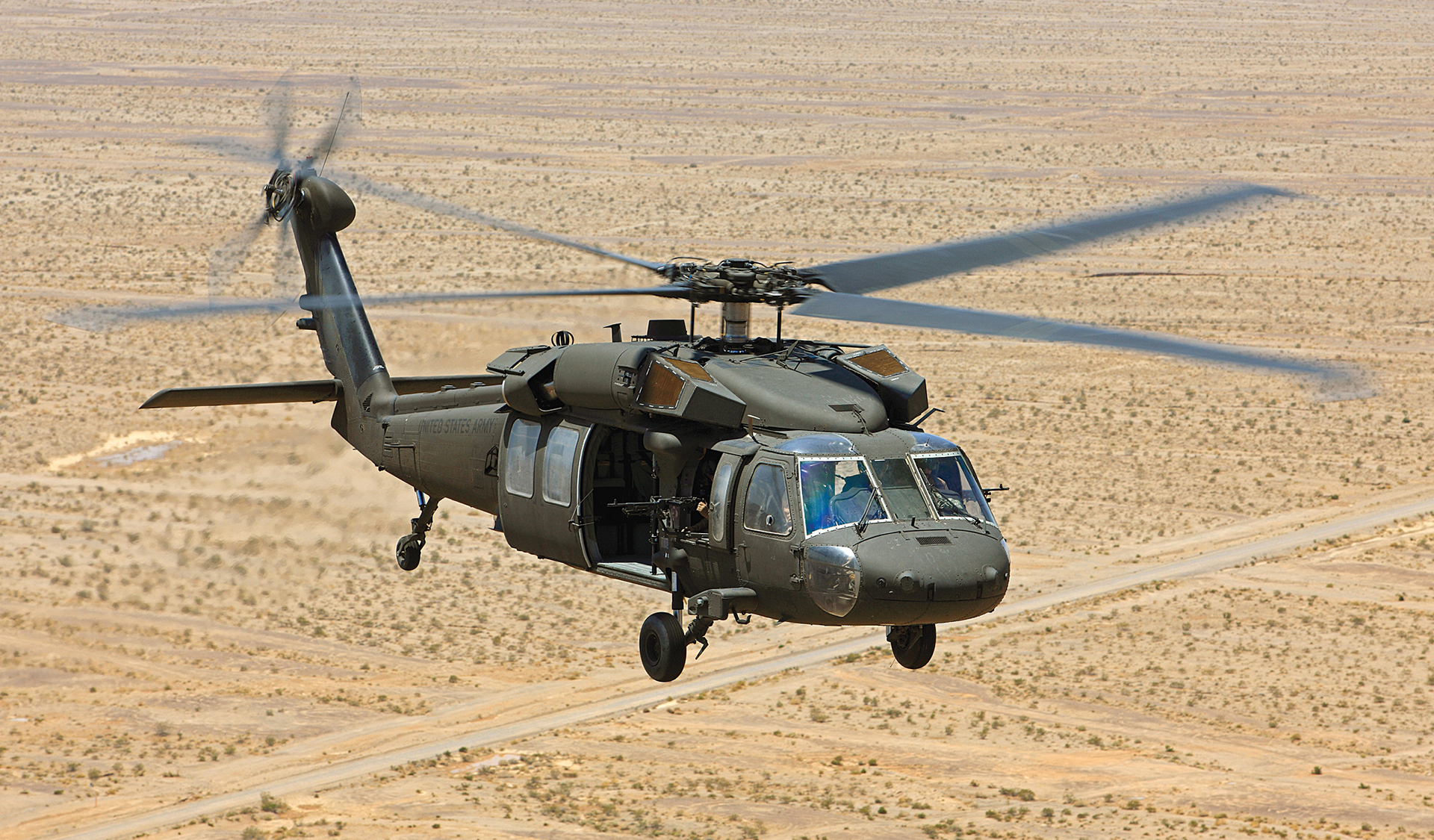Flying High: UH 60 Helicopter Safety Protocols You Must Know
Flying High: UH 60 Helicopter Safety Protocols You Must Know
Blog Article
Recognizing the Mechanics and Design Behind Uh 60 Helicopters
The UH-60 helicopter, commonly recognized as the Black Hawk, stands as a peak of contemporary rotorcraft modern technology, personifying a blend of robust design and detailed auto mechanics. As we peel back the layers of the UH-60's style, a world of complex systems and meticulous design comes to light.
Background of UH-60 Helicopters
The history of UH-60 helicopters traces back to the late 1970s when the USA Army looked for a flexible and sophisticated utility helicopter to change its aging fleet. In response to this demand, the Sikorsky Airplane Corporation created the UH-60 Black Hawk helicopter. Presented in 1979, the UH-60 rapidly became a staple in military procedures as a result of its remarkable capabilities.
The UH-60 was designed to stand out in a variety of goals, consisting of troop transport, clinical discharge, digital war, and unique operations. Its ability to adjust to different duties made it a beneficial possession to the united state Military and other military forces all over the world
Over the years, the UH-60 system has undertaken numerous upgrades and variants to improve its efficiency and equal evolving mission needs. These helicopters have actually seen considerable solution in problems such as the Gulf Battle, Afghanistan, and Iraq, showcasing their integrity and flexibility in varied functional environments. The UH-60's rich history is a testament to its long-lasting legacy as a premier energy helicopter.

Engine and Power Solutions
Using sophisticated propulsion modern technology, UH-60 helicopters are outfitted with innovative engine and power systems to make certain optimum efficiency and dependability in a range of functional circumstances. The UH-60, commonly referred to as the Black Hawk, is powered by 2 General Electric T700-GE-701D engines, each capable of providing up to 1,940 shaft horsepower. These turboshaft engines offer the needed drive for the helicopter to perform its goals efficiently, including army transport, clinical emptying, and battle support.

Blades System and The Rules Of Aerodynamics
Exactly how do the blades system and the rules of aerodynamics of UH-60 helicopters add to their functional performance and flight abilities? The rotor system of the UH-60 helicopter plays a critical function in supplying lift and propulsion. The UH-60 features a four-bladed, completely verbalized rotor system that enables high ability to move and security throughout trip. This layout allows the helicopter to do a vast variety of missions, from transportation and clinical discharge to deal with operations.
The rules of aerodynamics also play a crucial role in the performance of UH-60 helicopters. The structured body and blades blade style reduce drag, enabling the helicopter to accomplish greater rates and far better fuel performance. The aerodynamic design of the UH-60 additionally adds to its capability to operate in diverse environmental problems, including high elevations and warm temperatures.
Avionics and Flight Control Equipment

In its detailed sychronisation with the rotor system and the rules of aerodynamics of UH-60 helicopters, the avionics and trip control systems develop an essential network of modern technologies forming the airplane's operational capabilities. In the UH-60, these systems include electronic displays, communication radios, GPS navigating, climate radar, and auto-pilot systems.
The trip control systems of the UH-60 are accountable for translating the pilot's inputs into the proper changes to the blades system, guaranteeing steady trip and maneuverability. These systems include hydraulic actuators, servos, and computer systems that collaborate to regulate the tail and major rotors, along with various other flight control surfaces. By specifically taking care of the helicopter's trip characteristics, these systems make it possible for pilots to perform a variety of goals, from transportation and search-and-rescue to deal with procedures, with accuracy and self-confidence.
Role and Applications in Air Travel
The role and applications of avionics and flight control systems in aviation are important to making sure the reliable and safe operation of aircraft, consisting of UH-60 helicopters. Avionics systems in UH-60 helicopters encompass a series of digital systems that aid in navigation, communication, monitoring, and regulating different airplane functions. These systems consist of electronic display screens, autopilot systems, interaction radios, general practitioner navigation devices, and climate radar. Flight control systems play an important function in maneuvering the helicopter in the air, preserving stability, and making sure exact movements. The fly-by-wire innovation made use of in modern UH-60 helicopters equates pilot inputs right into electronic signals, which are then analyzed by the trip control computer systems to readjust the airplane's control surface areas. In addition, these systems integrate security features such as autopilot settings, surface understanding cautioning systems, and security augmentation systems to boost the overall safety and functional abilities of the UH-60 helicopters in different goals, including troop Our site transportation, clinical evacuation, search and rescue, and airborne firefighting.
Conclusion
In conclusion, the UH-60 helicopter is a functional airplane with an abundant history and progressed engineering. Its engine and power systems, rotor system, aerodynamics, avionics, and flight control systems all work with each other to make it a effective and dependable device.
In its detailed control with the rotor system and aerodynamics of UH-60 helicopters, the avionics and flight control systems develop a vital network of innovations forming the airplane's operational abilities.The flight control systems of the UH-60 are accountable for converting the pilot's inputs right into the appropriate adjustments to the blades system, making sure secure flight and ability to move. Avionics systems in UH-60 helicopters include a range of digital systems that help in navigating, interaction, monitoring, address and managing various airplane functions. In addition, these systems include security functions such as auto-pilot settings, terrain understanding alerting systems, and stability augmentation systems to improve the total safety and security and operational abilities of the UH-60 helicopters in numerous objectives, consisting of troop transportation, medical evacuation, search and rescue, and airborne firefighting.
Its engine and power systems, rotor system, the rules of aerodynamics, avionics, and trip control systems all function together to make it a efficient and pop over to this web-site reliable device.
Report this page